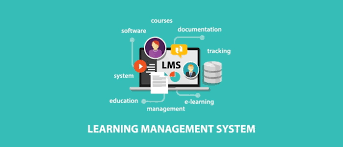Businesses can greatly benefit from incorporating a Learning Management System (LMS) into their employee training strategy. An LMS simplifies the process of delivering, overseeing, and monitoring training initiatives, ensuring that employees acquire the right knowledge and skills for success. In this article, we will delve into how companies can leverage an LMS to devise optimal training strategies.
Exploring the Advantages of an LMS
Utilizing an LMS brings many advantages in crafting a training strategy. First, it enables businesses to consolidate their training materials in one platform. This eliminates the need to search through resources or outdated filing systems, as employees can conveniently access all content via the LMS portal. A very useful LMS portal for businesses across industries is Totara, which has customizable features and offers impressive value for money.
Moreover, an LMS facilitates monitoring employee progress and performance. Managers can effortlessly generate reports that showcase completion rates and pinpoint any learning gaps. Armed with this data, organizations can identify areas that require training intervention or commend exceptional performers.
Essential Steps in Harnessing an LMS for Training Strategy Formulation
Evaluate Your Needs
Prior to embarking on the implementation of an LMS-centered training approach, it is imperative to conduct a needs evaluation. By pinpointing skill deficiencies in your team, and keeping in mind desired outcomes, organizations can tailor their training programs accordingly. Interviewing staff members or carrying out surveys are ways to gather insights on skill levels and identify areas that require attention.
Content Development
After establishing business goals and employee requirements, the next step is to create engaging content that aligns with these objectives. Whether it involves developing courses or sharing existing resources like videos or documents, the key is to ensure that the content is both informative and easily accessible.
Course Design
When designing courses on the LMS platform, it’s essential to prioritize simplicity and clarity without compromising engagement levels. Users should find navigation intuitive so they can smoothly progress through modules while grasping concepts effortlessly.
Incorporating elements of gamification can also enhance engagement and motivation. By including quizzes, leaderboards, and badges, companies can turn the learning process into a journey that fosters competition among employees.
Hybrid Learning
While the LMS serves as a platform for delivering training content, integrating hybrid learning methods leads to more favorable outcomes. Offering a blend of courses, webinars, in-person sessions, or practical workshops ensures that employees receive varied learning experiences tailored to their individual preferences and requirements.
Furthermore, blended learning fosters interaction and collaboration among learners, encouraging the sharing of knowledge and nurturing a culture of improvement within the company.
Tracking Progress
One key benefit of using an LMS is its monitoring capabilities. Supervisors can easily track employees’ progress, monitor their completion rates for modules or courses, and generate performance reports.
This information offers insights into areas that may need support or adjustments in the training approach. The ability to assess the effectiveness of training programs is essential for refining them over time and maximizing their effectiveness.
Continuous Enhancement
A successful training approach should not remain stagnant; it should continuously adapt to meet changing business needs and employee requirements. Regularly collecting feedback from employees on their experiences with LMS based training can provide input for enhancing courses or identifying content gaps.
Moreover, utilizing data analytics features within an LMS can provide insights into user behavior patterns or performance trends. With these insights, organizations, and employees can proactively identify ways to optimize their training approach to achieve long-term success.
Closing Note
Harnessing an LMS for developing a training strategy enables organizations to offer learning experiences while effectively managing resources and monitoring employee advancement.
By hooking workers with engaging material and incorporating a mix of learning methods, companies can boost employees’ skills while fostering a culture of enhancement that aligns with the company’s goals. Taking the time to understand employee needs during the assessment phase can lead to training that supports organizational objectives. Emphasizing improvement as part of the training plan helps companies stay flexible and responsive in an evolving business environment. Implementing a Learning Management System (LMS) for developing training strategies enables organizations to improve their capacity for training and empowering their workforce, ultimately driving business results.






